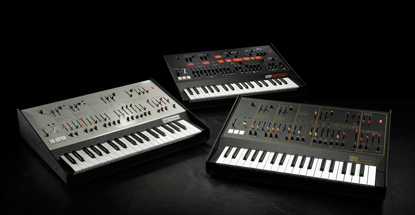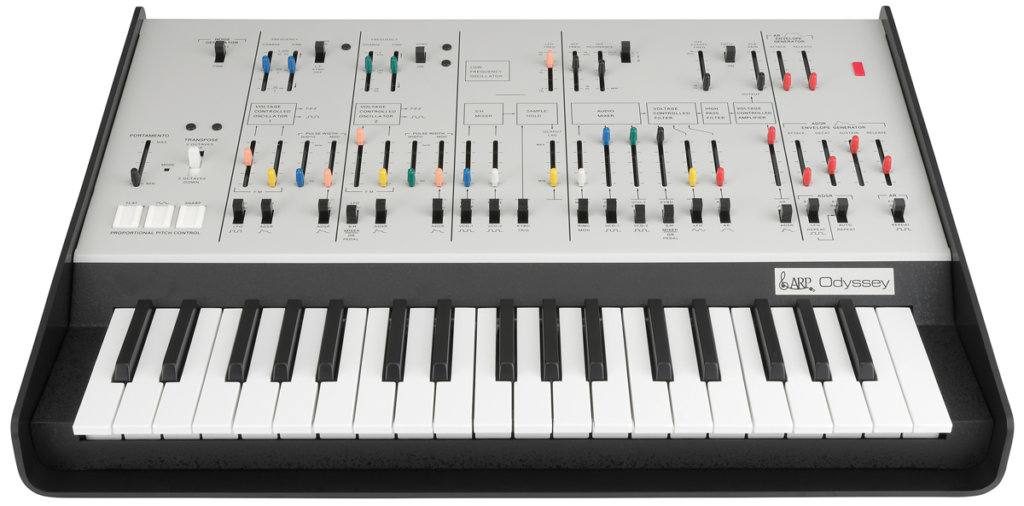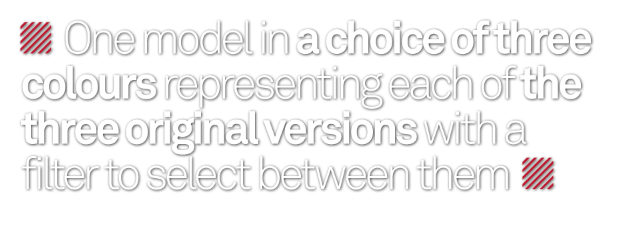Korg ARP Odyssey – The Massive Review
Not content with relaunching its own classic synth hardware – see last month’s exclusive review of the MS-20m synth – Korg has decided to produce other people’s too. And what better place to start than with the ARP Odyssey synth? And with a helping hand from one of its pioneering engineers to make sure the […]

Not content with relaunching its own classic synth hardware – see last month’s exclusive review of the MS-20m synth – Korg has decided to produce other people’s too. And what better place to start than with the ARP Odyssey synth? And with a helping hand from one of its pioneering engineers to make sure the new version is as close to the original as possible – or should we say ‘originals’? You see, this new ARP Odyssey is all three of the originals in one box. Andy Jones embarks on what can only be described as the Odyssey of a lifetime…


Details
Price £799
Contact Korg via website
Web www.korg.co.uk
Before I begin this ‘odyssey’ (sorry) I do have to supply a certain amount of background to give context. So if you’re familiar with the original ARP Odyssey, skip a few paragraphs to the one headed, ‘Read from here if you’re over 35 years of age’.
If you’re under 35, though, you may not understand the significance of this release and what it means to me and a hell of a lot of other people. I’ll be as brief as I can, but please allow some self indulgence…
Pitch back in time to the late 70s and electronic music is filtering massively into the mainstream. Yours truly has seen Kraftwerk, bought album number one (John Foxx’s Metamatic) and has become slightly annoyed by everyone discovering his very own Gary Numan and Human League (original line-up), all of whom had used, or would soon use, an ARP Odyssey for their then unique sounds.
This synth and the Minimoog were very much the Gibson Les Paul and Fender Stratocasters of their time (of all time, some might say). These were the synths that brought the sound of the circuits to the masses. Kraftwerk got there first as they could afford early ARP and Moogs. The Brits came second with a bunch of low cost versions, the Odyssey of which was arguably the most important. Electronic music was born, rave came next, and EDM followed a few decades later. The ARP and Moog made music history. And they made me the geek I am today. And then… well, the world went mad.
After a few hundred other companies got involved making analogue synths the world did indeed go a little crazy, abandoning the pure analogue format in favour of what they considered more palatable digital synths, with loads of preset sounds and other nonsense. Synths became a bit rubbish, and so did music.

But rave and dance music bought the sound of classic electronics to a new audience, and their sounds started appearing in virtual analogue hardware and soft synths on our Macs and PCs. And then hardware manufacturers finally cottoned on, and decided analogue was the thing the kids wanted so started making –and remaking – analogue synths.
We’ve had Novation bringing back the Bass Station, Studio Electronics bringing classic synth filters back in its Boomstar range (and adamantly sticking to analogue in the intervening years), hundreds of boutique modular synth companies doing their thing, and even Roland ‘recreating’ its classics – albeit in ‘not quite analogue’ form.
Korg, too, has been at it on the analogue front, notably with its Volca range of modules (which will soon have some competition with the new Teenage Engineering ‘calculator’ synths announced at NAMM). Korg also obviously has quite a heritage in analogue synths and has made – and remade – its MS-20 in software, and reduced-sized hardware. Plus, as we saw in last month’s exclusive review, in semi-modular format. And jolly good it is too. But now the company has gone one step forward – or three steps, actually. But rather than remaking yet another classic Korg synth, it has looked around to see what people want… what they really, really want. And that’s an ARP Odyssey…

Realising that the ARP Odyssey would be a great synth to remake – something we’ve all been screaming for, ooh, 35 years – Korg set out to do that with an announcement last year that it was partnering with original ARP engineer David Friend (although sadly not with founder Alan R Pearlman’s backing) to reproduce the synth.
This year’s NAMM show saw the results followed by fevered, geeky excitement around the Korg stand, as not one but three models of ARP Odyssey, each representing the three defining stages of the range, appeared.
To be clear, though – and before you get as carried away as I did – the new version (singular) is JUST ONE synth in three different shells. The big differences between all three models of the original Odyssey (aside from the obvious cosmetic differences) was the filter used. (Actually it’s a little more complicated than that and I attempt to clear it all up in the box on p72.) So with the new Odyssey synth, it’s one model in a choice of three colours representing each of the three Mks, and a filter selector to switch between all three filter types across the range.

All three versions in one: just choose the colour you want. Get it? The MkIII (orange and black version) is the most widely available of the new models, with the other two only available in limited numbers, so be quick if you want one of those…
